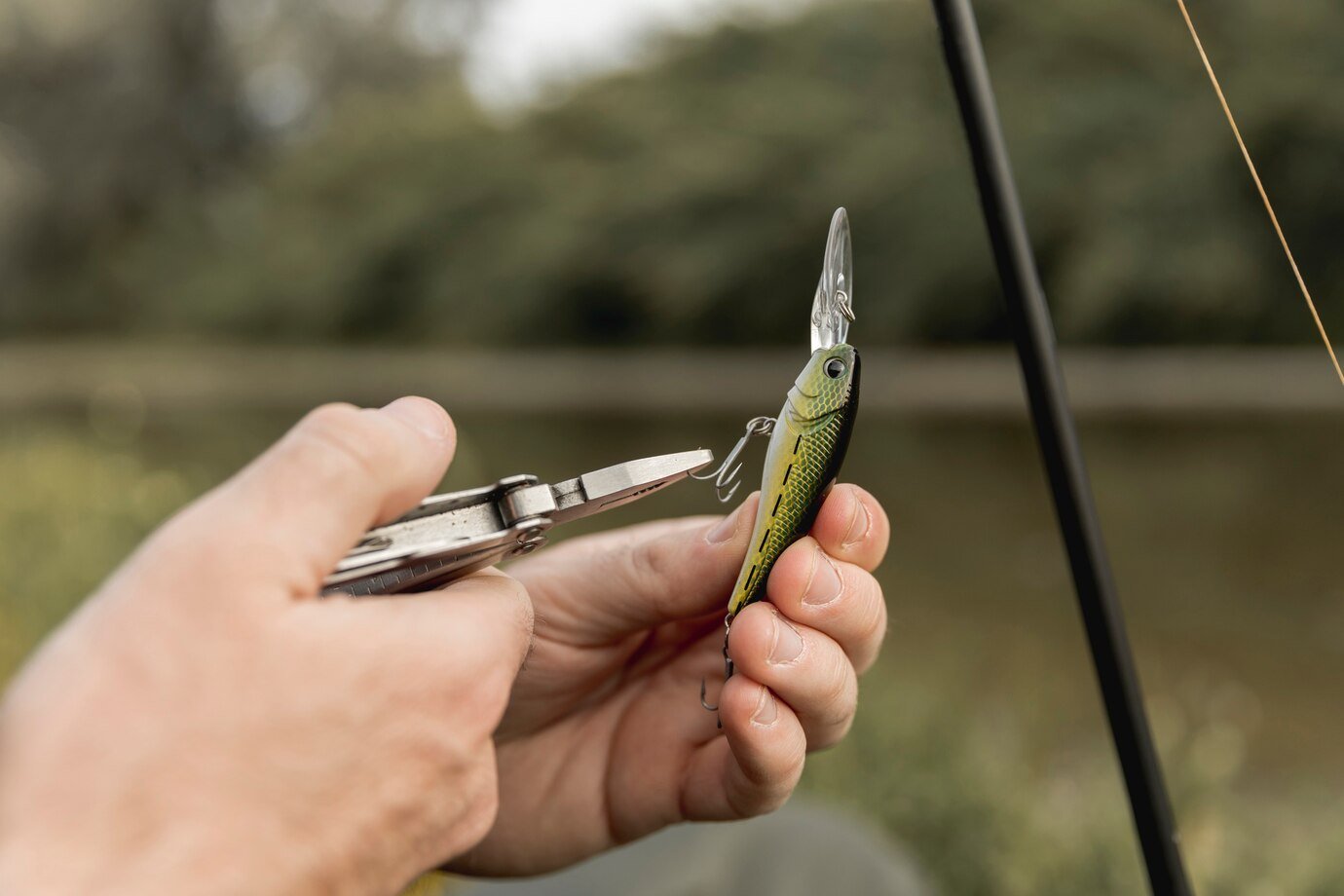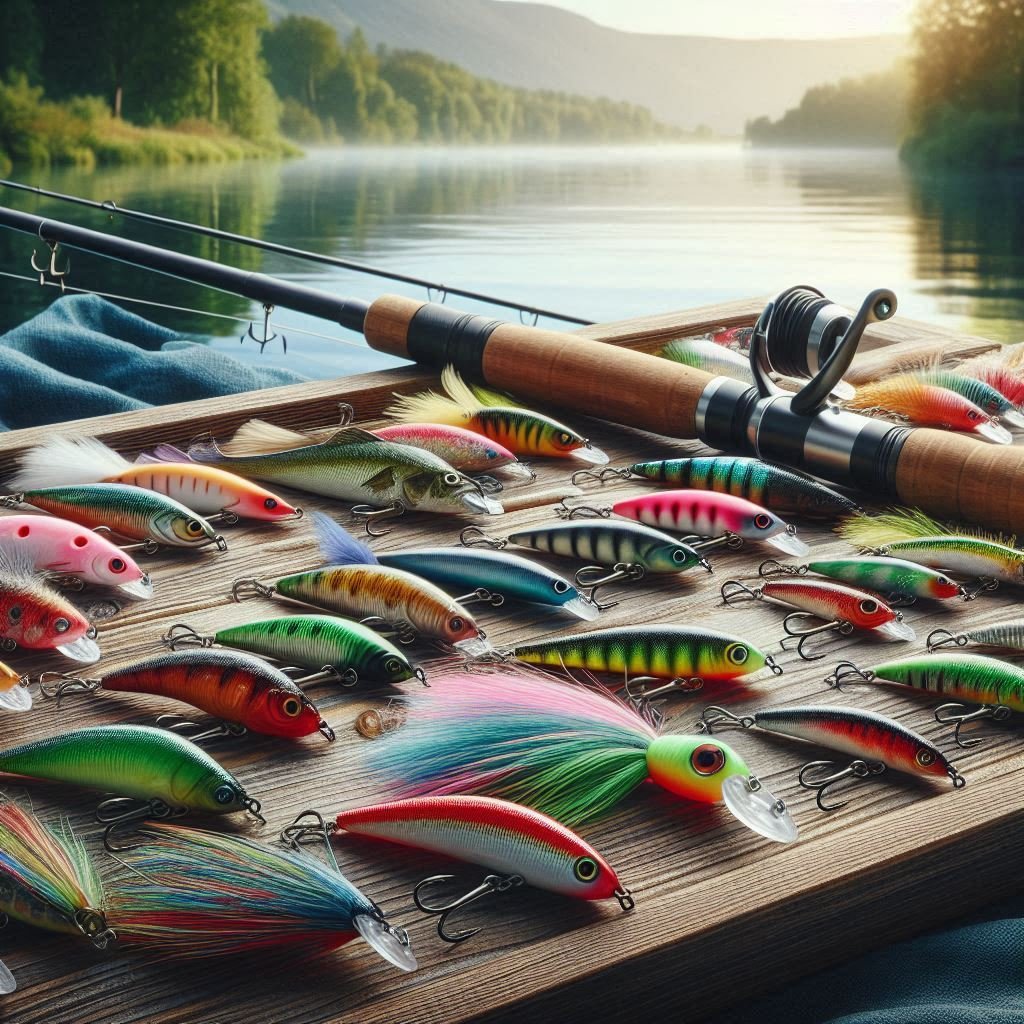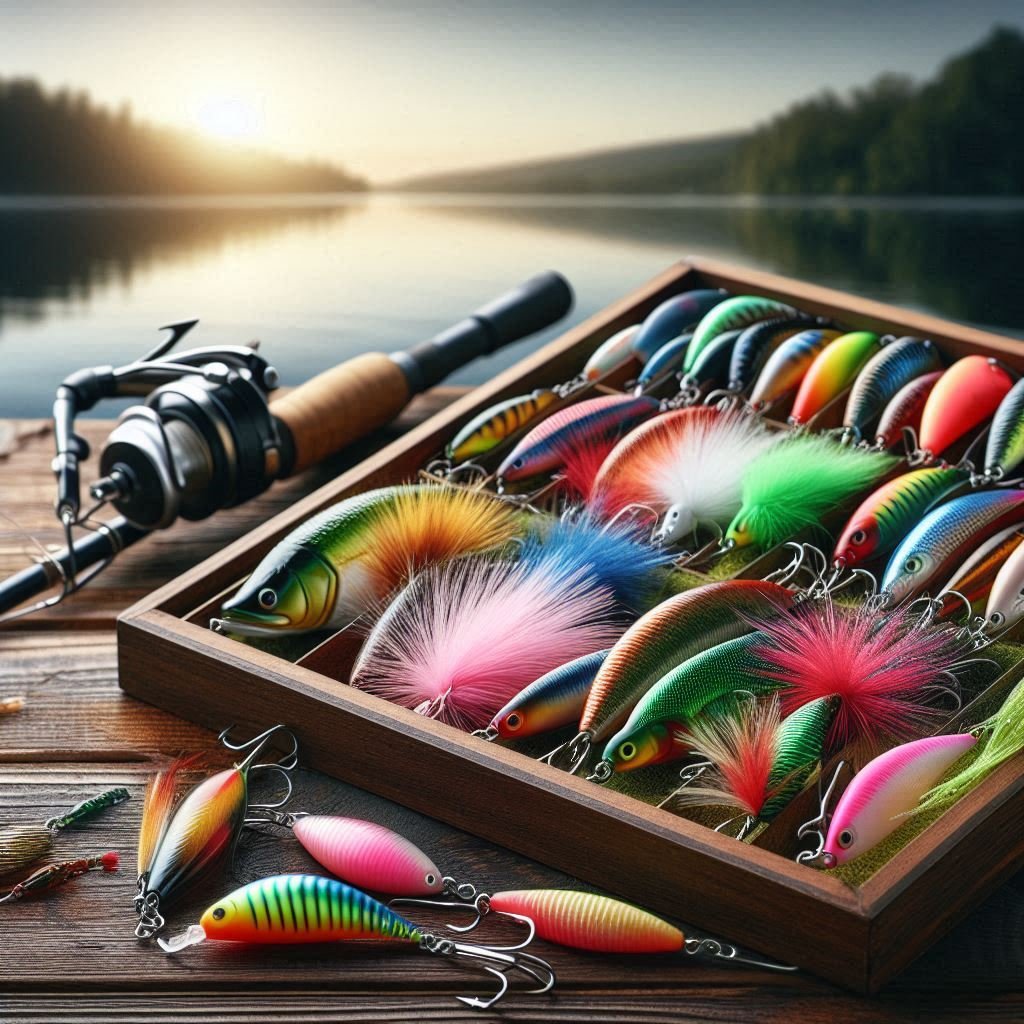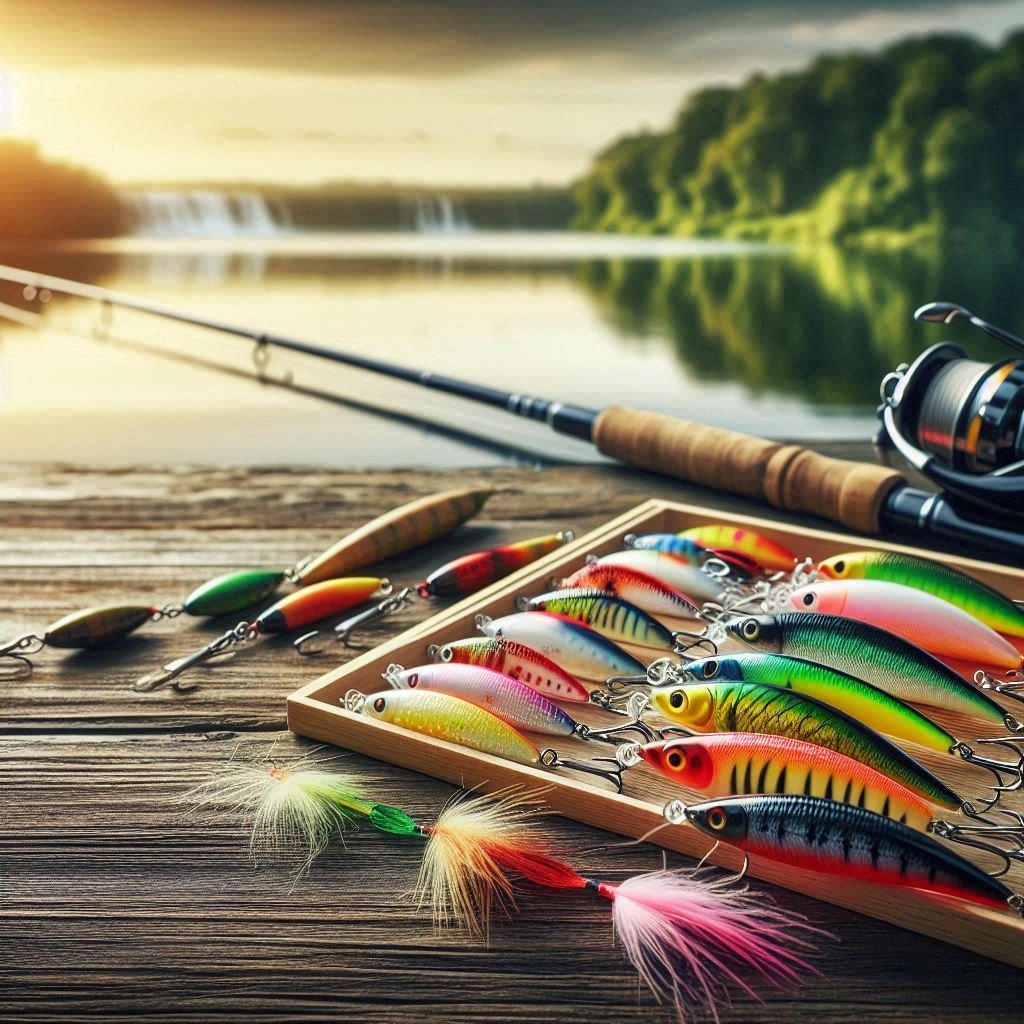When it comes to successful fishing, selecting the proper tools and techniques can make all the difference. One of the most crucial pieces of equipment is the lure fishing rod, paired with the right fishing lures. Lures are designed to mimic the movements and appearance of natural prey, attracting fish and increasing the chances of a bite. Understanding how different types of lures work and how to choose the best one for a given situation is vital to improving your fishing experience. In this guide, we’ll explore the various fishing lures, their specific uses, the science behind their design, and expert tips to maximize your fishing success.

What Are Fishing Lures?
At its core, a fishing lure is a tool used to catch fish by imitating the natural movements or appearance of prey species. Unlike live bait, which is typically organic, lures are artificial creations designed to mimic the size, shape, and movement of fish, insects, or other prey. The purpose of the lure is simple: entice fish to bite it, either out of hunger or aggression.
Fishing lures come in a variety of forms and materials, each engineered to attract specific species or perform optimally under different conditions. Their designs include features that reflect the appearance of natural prey, from color patterns to movement in the water.
The Different Types of Fishing Lures
Fishing lures are available in an array of designs, each serving a unique purpose based on fishing conditions and species targeted. Let’s break down some of the most common types:
Hard Baits
Hard baits are often made from wood, plastic, or metal and come in a wide range of designs. These lures are great for attracting predatory fish like bass, pike, and walleye. They come in various shapes and sizes, such as crankbaits, minnow baits, and jerkbaits. These lures are known for their ability to mimic the swimming action of baitfish, making them highly effective in certain environments.
Soft Plastics
Soft plastic lures, such as worms, crawfish, and grubs, are commonly used in freshwater fishing, especially when targeting species like bass and trout. These lures are designed to resemble natural prey with soft, flexible bodies that move realistically through the water. They can be rigged in various ways, such as Texas-rigged or Carolina-rigged, depending on the specific conditions.
Spinners and Spinnerbaits
Spinners are lures that feature rotating blades that create flash and vibration as they move through the water. These are particularly effective in murky waters or areas where fish rely more on vibrations than on sight. Spinnerbaits are a variation of spinners, combining a spinner with a jighead and skirt. These lures excel in attracting predatory fish such as bass.
Spoons
Spoons are concave-shaped metal lures that flutter through the water, mimicking the movement of injured baitfish. Their reflective surfaces attract fish by simulating the flash of a distressed prey. They are often used for species like pike, trout, and salmon, especially in deep water or when fish are less active.
Jigs
Jigs are versatile lures that feature a weighted head and a soft body, often with feathers or silicone strands. They can be used in both fresh and saltwater and are ideal for bottom fishing. Jigs are effective at targeting species like walleye, bass, and panfish, as they can be worked slowly or rapidly depending on the fishing environment.
Flies
Fly fishing lures, or flies, are designed to imitate insects, minnows, or other prey that fish naturally feed on. They are typically lightweight and can be cast using a fly rod. Flies are especially popular for targeting trout, salmon, and other species in streams and rivers.

Choosing the Right Lure Material
The construction material of a lure plays a significant role in its effectiveness. Various materials provide different benefits in terms of durability, buoyancy, and action.
Wood
Wooden lures, while less common in modern fishing, have a classic appeal due to their natural buoyancy and ability to provide a smooth action in the water. Many traditional lures are made from wood, and they are still used by purists for their unique actions.
Metal
Metal lures, such as spoons, jigs, and spinners, are durable and often feature reflective surfaces that mimic the flash of fish scales. They are typically used for deep-water fishing or in situations where a loud sound or vibration is needed to attract fish.
Plastic
Plastic lures, particularly soft plastics, are among the most versatile lures available. They come in a wide variety of shapes, sizes, and colors and can be rigged in numerous ways. Their flexibility allows them to mimic the movements of live prey, making them a top choice for bass and other predatory species.
Silicone
Silicone is often used for soft plastic lures, providing an extra level of flexibility and realism. It is commonly used in worms, crawfish, and swimbait lures and is prized for its durability and lifelike action.
How to Choose the Right Lure Based on Conditions
Selecting the best fishing lure isn’t just about picking your favorite one; it requires understanding the conditions you’ll be fishing in. The water’s clarity, depth, and temperature, as well as the time of day and the target species, all influence the ideal lure choice.
Water Clarity
In clear water, fish rely more on sight to identify prey. Lures that mimic natural prey with subtle color patterns and realistic movements are often more effective. In murky water, fish depend more on their sense of vibration and sound, so bright colors and noisy lures, like spinners and crankbaits, can be more successful.
Water Depth and Temperature
Deep-water fishing often requires lures that can sink and reach greater depths, such as weighted spoons or deep-diving crankbaits. In colder water, fish tend to be less active, so slow-moving lures or those that mimic injured prey can be more effective. In warm water, faster-moving lures like poppers or spinnerbaits can elicit more strikes.
Time of Day
Fishing lures perform differently depending on the time of day. Early morning and late evening often call for darker lures, while midday fishing may benefit from brighter, more reflective lures. Lures that imitate small fish or insects can be effective in the early hours, when fish are more likely to hunt.

The Science Behind Lure Action
Lure action refers to the way a lure moves through the water. The goal of this action is to mimic the swimming patterns of natural prey to attract fish. Common actions include:
- Wobbling: A subtle side-to-side motion, often used in crankbaits and swimbaits, mimicking a struggling fish.
- Vibrating: A fast, vibrating action that creates a disturbance in the water, perfect for spinners and rattle lures.
- Fluttering: A slow, erratic sinking action, often seen in spoons and soft plastics, which imitates a wounded fish.
The action of the lure can significantly affect its ability to attract fish, so understanding the behavior of the species you’re targeting is crucial for choosing the right one.
Advanced Techniques: Trolling and Jigging
For more experienced anglers, advanced fishing techniques such as trolling and jigging can be used to increase success rates with lures. Trolling involves dragging a lure behind a moving boat at varying speeds, simulating the movement of small fish. Jigging, on the other hand, involves dropping a weighted lure to the bottom and then rapidly lifting it to simulate an injured or fleeing prey species.
Both techniques require a careful selection of lures, and understanding the specific needs of the targeted species will determine the most effective lure choice.
The Role of Scent and Sound in Lures
While visual cues are important, scent and sound are also critical in attracting fish. Many modern lures are designed with scent-infused materials or chambers that release attractants into the water. Sound-producing features, such as rattles, can also draw fish by creating vibrations that mimic the distress calls of prey.
Maintaining and Storing Fishing Lures
To ensure your fishing lures perform at their best, proper maintenance and storage are essential. Always clean your lures after use to remove any dirt, salt, or grime. Store them in a cool, dry place to prevent deterioration, especially if they are made of wood or metal. Additionally, checking hooks for rust or dullness can keep your lures performing optimally for longer.
Evolution of Fishing Lures

Fishing lures have come a long way, from simple hand-carved wooden designs to high-tech creations with built-in electronics. Today’s lures feature advanced materials and designs, such as 3D printing and internal rattles, which offer even more realistic presentations and better fish attraction. Innovations such as smart lures with integrated sensors that track water temperature and depth are paving the way for a new era in fishing.
Selecting the Right Lure for Different Conditions
Choosing the right lure fishing rod and accompanying lure depends on the fishing conditions you encounter. To select the best one, consider the species you are targeting, the water conditions, and the time of year. Make sure to carry a variety of lures in your tackle box to adapt to changing circumstances and maximize your chances of success.
Maximizing Success with Fishing Lures
Success in lure fishing doesn’t happen by chance. By carefully selecting the right lure for the conditions, practicing casting and retrieval techniques, and maintaining your lures, you can significantly improve your chances of a successful catch. Over time, you’ll learn which lures work best for you and refine your technique to master the art of lure fishing.
Latest News and Events on Lure Fishing Rods
The world of fishing is always evolving, with new innovations, competitions, and trends emerging regularly. Recently, the lure fishing community has been abuzz with exciting updates, particularly in relation to lure fishing rods and their enhanced performance. One notable event is the 2024 Lure Fishing Rod Expo, which took place in Orlando, Florida. At this event, several leading brands showcased their latest fishing rods and lures, featuring technological advancements such as adjustable reel seats, lightweight composites, and multi-action tips that promise to make the fishing experience even more efficient and enjoyable.
Additionally, the Annual Bassmaster Classic in March 2024 featured cutting-edge lure techniques, where top anglers demonstrated how the right lure fishing rod paired with specialized lures can significantly impact competitive fishing success. New lure designs, incorporating LED lights and smart tracking features, were also unveiled, promising to revolutionize how anglers approach fishing in both freshwater and saltwater environments. Let’s Check Out Understanding the Hellbender Fishing Lure
FAQs About Lure Fishing Rods and Fishing Lures

What is a Lure Fishing Rod?
A lure fishing rod is a specialized fishing rod designed for use with artificial lures. These rods are typically more sensitive than traditional rods, allowing anglers to detect subtle bites or changes in lure action. The rods vary in length, action, and power, catering to different types of lures and fishing techniques.
How Do I Choose the Right Lure Fishing Rod for My Needs?
When selecting a lure fishing rod, consider factors such as the type of fishing you plan to do (freshwater vs. saltwater), the species you’re targeting, and the type of lures you’ll be using. For lighter lures, a medium-light or light-action rod works best. For heavier lures or deeper waters, you may need a medium or heavy-action rod.
What Makes Lure Fishing Rods Different From Regular Fishing Rods?
Lure fishing rods are designed specifically to handle the weight, action, and sensitivity required for casting and retrieving artificial lures. They tend to be more flexible with faster tips to improve accuracy and sensitivity. Traditional rods, by comparison, are often designed for live bait fishing and may not provide the same precision or responsiveness when working with lures.
What Are the Benefits of Using a Lure Fishing Rod?
The benefits of using a lure fishing rod include better accuracy when casting, enhanced sensitivity to detect bites, and improved control over lure retrieval. The right rod also allows for better casting distance and precision, especially when working with smaller lures like soft plastics or flies.
What Types of Lures Can Be Used With a Lure Fishing Rod?
A lure fishing rod is versatile and can be used with various types of lures, including crankbaits, jerkbaits, spinnerbaits, soft plastics, spoons, and flies. The rod’s flexibility and action will depend on the type of lure, species targeted, and fishing conditions.
How Does the Action of a Lure Fishing Rod Affect Performance?
The action of a lure fishing rod refers to how much the rod bends when pressure is applied. Faster action rods bend closer to the tip, providing more sensitivity and quick hook sets. Slower action rods bend further down the blank, which can offer more control over larger lures or softer hooksets for certain species.
What Size Lure Should I Use With a Lure Fishing Rod?
The size of the lure you use with your lure fishing rod depends on the rod’s power and action. A lighter rod is ideal for smaller lures (1/16oz to 1/4oz), while a heavier rod can handle larger lures (1/2oz and above). Always match the rod’s specs to the weight and type of lure to ensure optimal performance.
Can I Use a Lure Fishing Rod for Both Freshwater and Saltwater Fishing?
Yes, lure fishing rods can be used for both freshwater and saltwater fishing, but make sure you choose a rod that is designed to handle the conditions of each environment. Saltwater rods tend to be made with corrosion-resistant materials, while freshwater rods may focus on lighter construction and sensitivity for freshwater species.
What Are the Key Features to Look for in a Lure Fishing Rod?
When selecting a lure fishing rod, consider the following features:
- Action: Choose based on the type of lure and species targeted.
- Material: Lightweight materials like carbon fiber and graphite offer sensitivity and durability.
- Handle: A comfortable, non-slip handle for long hours of fishing.
- Sensitivity: A sensitive rod helps detect bites and subtle movements of lures.
How Do I Maintain My Lure Fishing Rod?
Maintaining your lure fishing rod involves regular cleaning, particularly after saltwater use. Rinse your rod with fresh water to remove any salt residue, inspect the guides for damage, and store it in a cool, dry place. It’s also important to periodically check for rod tip damage or loose reel seats.
Can I Modify My Lure Fishing Rod for Better Performance?
Yes, many anglers modify their lure fishing rods to suit their personal preferences. You can upgrade reel seats, replace guides, or change the handle to improve comfort and performance. Some advanced anglers even experiment with custom blank designs to optimize the rod for specific fishing techniques or species.
Share Your Lure Fishing Experiences
What’s your favorite lure fishing rod and what species do you target with it? Have you attended any fishing expos or tried out new lure technologies recently? Share your thoughts in the comments below, and don’t forget to share this article with fellow fishing enthusiasts on social media. We’d love to hear your experiences, tips, and stories from your fishing adventures!
Take Action and Enhance Your Fishing Experience
Choosing the right lure fishing rod and mastering the art of using lures can elevate your fishing game to new heights. From selecting the right rod and lure type to understanding the science behind lure action, your fishing success depends on making informed decisions. Now that you have the knowledge, it’s time to hit the water!
If you found this article helpful, consider commenting below with your thoughts, sharing it with friends, or subscribing for more expert fishing tips. Whether you’re a seasoned angler or a beginner, the right fishing rod and lure can make all the difference in your catch.
